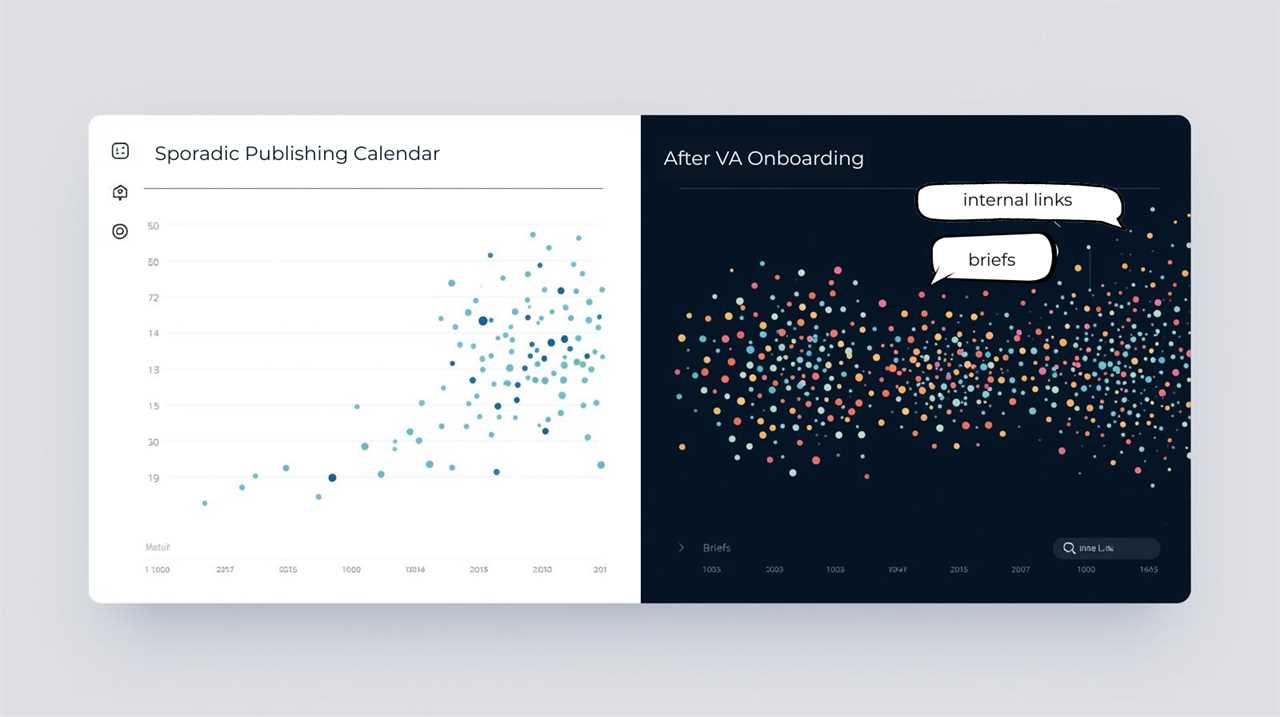
The fastest-growing operators aren’t doing more work—they’re delegating smarter work. By plugging in trained SEO virtual assistants (VAs), savvy founders spin up content pipelines, clean up technical debt, and build authority signals at scale. The result is a compounding flywheel: more high-quality pages published, more interlinking and citations, more crawlable structure, better rankings. They aren’t guessing, either. They follow a tight process—prioritize, templatize, delegate, and review. If the idea of moving faster with fewer bottlenecks sounds appealing, start by learning how to hire a virtual assistant without wasting time or money. Then use the frameworks below to turn raw effort into predictable SEO outcomes.
Speed and consistency—not one-off “hacks”—win today’s search. Teams that shift well-defined SEO tasks to VAs see immediate throughput gains: outlines and briefs created on schedule, on-page fixes applied in batches, internal links updated across clusters, and citations refreshed without clogging the founder’s calendar. Even better, process makes quality scalable: the person doing the task changes, but the standard doesn’t. If this sounds theoretical, it isn’t—operators who master handoffs, templates, and simple QA checklists (see how to delegate work to a virtual assistant) routinely publish more and fix more each week without burning out the in-house team.
What an SEO VA Can Do
An SEO VA isn’t “extra hands;” they are process power. Think of them as the engine that turns your strategy into ship-ready pages and tidy site hygiene. Before the bullets, notice how each item maps to a measurable output (published pages, resolved issues, improved signals).
- Keyword research & clustering: Draft seed lists, expand with people-also-ask, consolidate into clusters, propose pillar/supporting intent.
- Briefs & outlines: Convert clusters into article briefs with H2/H3s, evidence requirements, internal link targets, and SERP notes.
- On-page updates: Optimize titles/H1s/meta, add schema, compress images/alt text, improve readability, and enforce style guides.
- Internal linking: Add links from aged posts to new ones and across clusters; maintain a simple “where to link” matrix.
- Citations & sources log: Maintain a shared Sources sheet to support claims with reputable orgs; keep live-link checks green.
- Content upload & formatting: Stage drafts in CMS, apply templates, add jump links, and run pre-publish QA.
- Tech sweep (light): Flag 404s/redirect loops, submit URLs for re-crawl, verify canonical and index status for new/updated pages.
- GBP & listings support: Draft weekly posts, add UTM-tagged links, record proof-of-work screenshots for accountability.
- Reporting cadence: Update a single “SEO Scorecard” (pages shipped, fixes closed, links added, wins/losses).
Ready to discover if hiring VAs is the right move for your business? Book your free consultation with Scott today and get expert guidance tailored to your needs. Schedule your session here: https://globaldigitalmedia.vip/
Hiring Framework
A repeatable framework turns “nice idea” into “next month’s traffic.” The structure below ensures you recruit for the outcomes you want and manage for quality without micromanaging.
- Define outcomes, not roles. Specify outputs (e.g., “8 briefs/week,” “20 internal links added/week,” “10 on-page fixes/week”) rather than vague duties.
- Create the starter pack. Record one Loom per recurring task, save the checklist under it, and link the SOP inside the checklist. No orphan SOPs.
- Scorecards, not vibes. Track weekly outputs in a shared sheet; review trendlines in a 15-minute meeting—celebrate wins, fix bottlenecks.
- Train on your site’s truth. Use your real content inventory, not generic practice assignments. Ship fast, learn faster.
- Calibrate with exemplars. Provide “gold standard” examples: a perfect brief, a perfect internal-link pass, a perfect on-page fix.
- Audit rhythm. Founder/SEO lead samples 10–20% of work weekly, leaves timestamped feedback, and updates SOPs when patterns emerge.
For niche operators, pairing the framework with role-aware examples accelerates ramp-up—e.g., see how real-estate virtual assistants drive revenue tasks to adapt your own task library.

Significance
This matters now because search has shifted from a “who publishes once” game to a “who publishes reliably and is most helpful” game. Helpfulness scales when handoffs are clean. Delegation also shields you from sudden pivots—algorithm adjustments, new SERP features, or even policy/environment changes—because the work is already templated and distributed.
- Algorithm resilience: Helpful, reliable, people-first content with clean internal links is future-proofed against most volatility.
- Throughput advantage: A VA-powered content line ships consistently; competitors without one publish in bursts, then stall.
- Cost control: Delegation trims the unscalable parts of production (context switching, redo cycles, delayed reviews).
- Optionality: With SOPs, you can add a second VA to double throughput without doubling the manager’s time.

Curious how outside forces can affect capacity planning and hiring? Scan this perspective on policy shifts and remote talent and build buffers into your SOPs (e.g., secondary tasks when publishing is blocked).
Common Pitfalls
Most VA “fails” are system problems dressed up as people problems. Prevent them by designing the system first and then staffing it.
- Vague briefs. “Write a post on X” yields rewrites. Provide intent, angle, H2s, examples, and internal link targets.
- No single source of truth. Scattered SOPs cause inconsistencies. Centralize checklists where work happens.
- Over-stuffed first month. Ramp in layers: briefs → internal links → on-page → upload → tech sweep.
- Review bottlenecks. If approvals take days, ship slips. Pre-approve templates; review outputs, not individuals.
- Invisible wins. If you don’t log fixes and links, momentum dies. Make the Scorecard visible and celebrate velocity.
FAQs
1) What’s the difference between an SEO VA and a general VA?
An SEO VA is trained on tasks that directly impact rankings—briefs, interlinking, on-page edits, citations, light technical sweeps, and content upload/QA. A general VA handles admin, scheduling, and inbox work. Many teams start with one person, then specialize roles as volume increases.
2) How many hours per week should an entrepreneur allocate at the start?
Plan 5–10 hours in month one for onboarding, SOP creation, and reviews. After the foundation is set, most operators reduce to a 30–60 minute weekly check-in plus asynchronous comments in the Scorecard and docs.
3) What’s the simplest way to measure success?
Track outputs you can count (briefs created, pages published, internal links added, on-page fixes applied) alongside outcomes (queries won, impressions/clicks per cluster). Velocity plus accuracy is the goal; rankings follow sustained helpfulness and clean site structure.
If the next 90 days are about shipping more helpful content with fewer bottlenecks, a well-run VA program is the straightest line to results. Build your SOPs once, delegate the repeatables, and protect your team’s focus for strategy and differentiation. For more deeply practical playbooks and examples, explore the full hub of VA-driven social marketing resources here: VA-Driven Social Marketing.
Sources
- Google Search Essentials — Google Search Central
https://developers.google.com/search/docs/essentials - SEO Starter Guide — Google Search Central
https://developers.google.com/search/docs/fundamentals/seo-starter-guide - Does Working from Home Work? Evidence from a Chinese Experiment — Stanford/NBER
https://www.nber.org/system/files/working_papers/w18871/w18871.pdf - U.S. Small Business Administration — Outsourcing for Small Businesses
https://www.sba.gov/blog/10-small-business-functions-can-be-easily-outsourced






